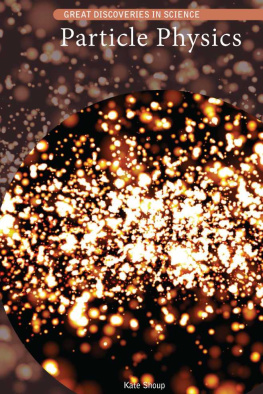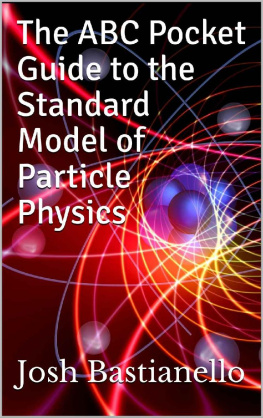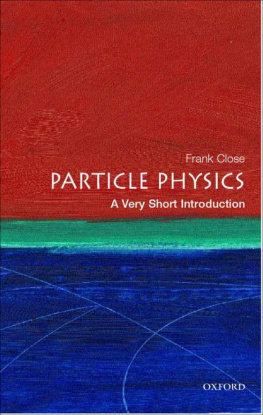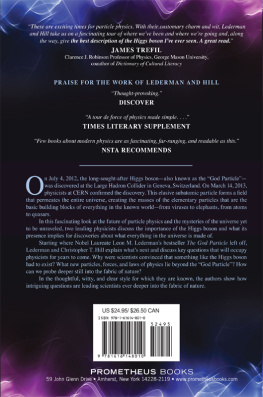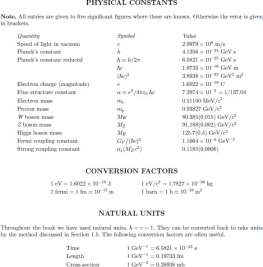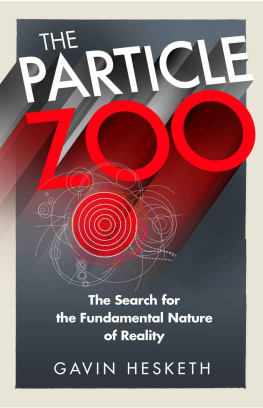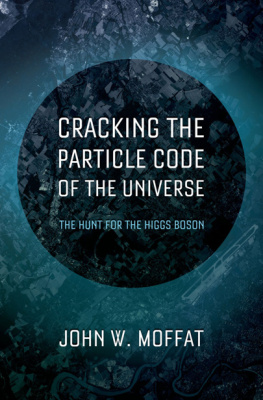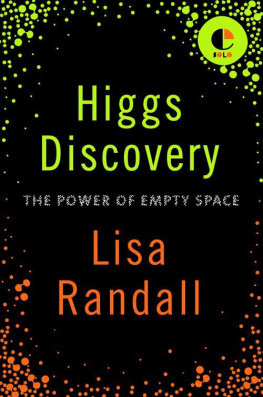A Palette of Particles
A Palette of Particles
Jeremy Bernstein
The Belknap Press of Harvard University Press
Cambridge, Massachusetts
London, England / 2013
Copyright 2013 by the President and Fellows of Harvard College
All rights reserved
Jacket art and design: Jill Breitbarth
The Library of Congress has cataloged the printed edition as follows:
Bernstein, Jeremy, 1929
A palette of particles / Jeremy Bernstein.
pages cm
Includes index.
ISBN 978-0-674-07251-0 (alk. paper)
1. Particles (Nuclear physics)Popular works. I. Title.
QC793.26.B47 2013
539.7'2dc23 2012032819
Book design by Dean Bornstein
Contents
I.
II.
III.
Appendix 1:
Appendix 2:
Appendix 3:
I have been exposed to the physics of elementary particles for over a half century. These particles now appear to me as colors in a palette that can be used to compose the tableau of the universe. There are what I would call the primary colors: the particles needed to describe the aspects of the universe that are accessible without the use of tools such as very high-energy accelerators or cosmic ray detectors. In this list I include the electron, the quantum of light (known as the photon), the neutron, the proton, and, most exotically, the neutrino. I am also willing to include their antiparticles, although most of these are not accessible without advanced technology. This was the set that was in play until the 1930s. At this time a new set of particles appeared, either in the minds of theorists or unexpectedly in experiments. An example was what came to be called pi-mesons and later pions. They were a theoretical suggestion of a Japanese physicist named Hideki Yukawa, about whom we will hear later. Initially it was thought that they had been discovered in cosmic radiationradiation from extraterrestrial sourcesbut it turned out that what had been discovered were not Yukawas particles but mu-mesons (now called muons), which are heavy, unstable electrons. Before physicists could resolve the matter and resume the search for Yukawas particle, however, World War II intervened.
Upon returning from the war, the physicists resumed their ordinary research, discovering a plethora of new, unexpectedly strange particles either in cosmic rays or in the collisions produced in the new, very high-energy accelerators. These included particles such as the K-meson and what might loosely be described as heavy neutrons and protonsparticles such as the so-called lambda and sigma particles. They seemed to have no rhyme or reason until Murray Gell-Mann proposed an order and eventually the components that he called quarks. There are now dozens and dozens of these strange objects. Lastly, there is the Higgs boson, the existence of which appears to be confirmed in the experiments being done at CERNs Large Hadron Collider near Geneva, Switzerland. This particle is thought to be the source of the masses of at least some of the others.
This chronology explains the order of the book. I begin with chapters on the primary colors. Then I turn to the secondaries and finally to the exotics. I hope in each chapter to give some piquant bits of history. I was witness to the postwar developments, so I bring in an occasional personal observation. Part of the material in this book was previously published in American Scientist, and hence the level is attuned to a general reader with an interest in science.
Before I begin, let me make a general observation. None of the particles we shall discuss can be seen with a microscope, to say nothing of the naked eye. The quark, if present ideas are correct, can never be observed by any means as a free particle. In this sense these particles are abstractions. We deduce their existence from things we can see. For example, we can see the track a charged particle makes in a detector because these tracks are macroscopic manifestations. Only after a chain of theoretical arguments are we persuaded that what we are observing has been made by an invisible object. The point I want to make is that this connection is not new. At the end of the nineteenth century there was a debate about the existence of atoms. No one doubted the chemists atom, because its physical properties were largely irrelevant; it was merely a symbol that helped keep track of chemical reactions. But many physicists at the time actually insisted that the atom was real. Thermodynamic parameters such as heat, they said, were a manifestation of the motion of unobserved molecules. This accounted for the laws of thermodynamics. But there were skeptics, including the Austrian physicist-philosopher Ernst Mach. Mach argued that the laws of thermodynamics did not need an explanation, above all by invoking the actions of these abstract objects. To people who challenged him about the existence of atoms, he would say, Have you seen one? Nothing could change his mind. One wonders what he would have said about photographs that apparently show single atoms. Still, we have no photograph that shows a single neutron, let alone the more exotic particles in our palette. We accept their existence because it explains what we do see. As we proceed we will see how this works.
As I mentioned, the more recently discovered particles are more and more abstract. They are not needed to explain what goes on around us unless we happen to be in a high-energy physics laboratory. The discovery of their properties has become more and more expensive. My guess is that the cost of all the discoveries I will mention in , when put together, was a few thousand dollars. I was the house theorist for the Harvard Cyclotron from 1955 to 1957. That machine, including the building, cost something like a half million dollars. The experiments now being done to find the Higgs boson cost billions. There is an irony in this, in that we now know that over 80 percent of the matter in the universe consists of objects we cannot identify. None of the particles I will describe is a candidate, so we have a mystery. I am personally pleased with this. I see nature as something like those nested Russian dolls, except in this case I think there may be no limit. The deeper we probe, the more will be left to probe.
Part I
It has so far been assumed that the neutron is a complex particle consisting of a proton and an electron. This is the simplest assumption and it is supported by the evidence that the mass of the neutron is about 1.006, just a little less than the sum of the masses of a proton and an electron. Such a neutron would appear to be the first step in the combination of the elementary particles towards the formation of a nucleus. It is obvious that this neutron may help us to visualise the building up of more complex structures, but the discussion of these matters will not be pursued further for such speculations, though not idle, are not at the moment very fruitful. It is, of course, possible to suppose that the neutron may be an elementary particle. This view has little to recommend it at present, except the possibility of explaining the statistics of such nuclei as N14.
James Chadwick, The Existence of a Neutron, Proceedings of the Royal Society A 136 (1932): 706
The word isotope was first used in the December 4, 1913, issue of the journal Nature in an article written by the British radiochemist Frederick Soddy, then a lecturer at the University of Glasgow. He had observed two versions of the element uranium that seemed to have the same chemical propertiesthey were both uraniumbut slightly different masses. At a family lunch he brought up the problem of how to refer to these atomic brothers. A guest was a Scottish doctor named Margaret Todd, who was a friend of his in-laws. She came up with the name isotope: topos being the Greek for place and iso being the Greek for same. So isotope means same placethe place being the position in the periodic tableand isotope it has been ever since. But we owe the physics of isotopes to the New Zealandborn physicist Ernest Rutherford, one of the greatest experimental physicists who ever lived.
Next page


